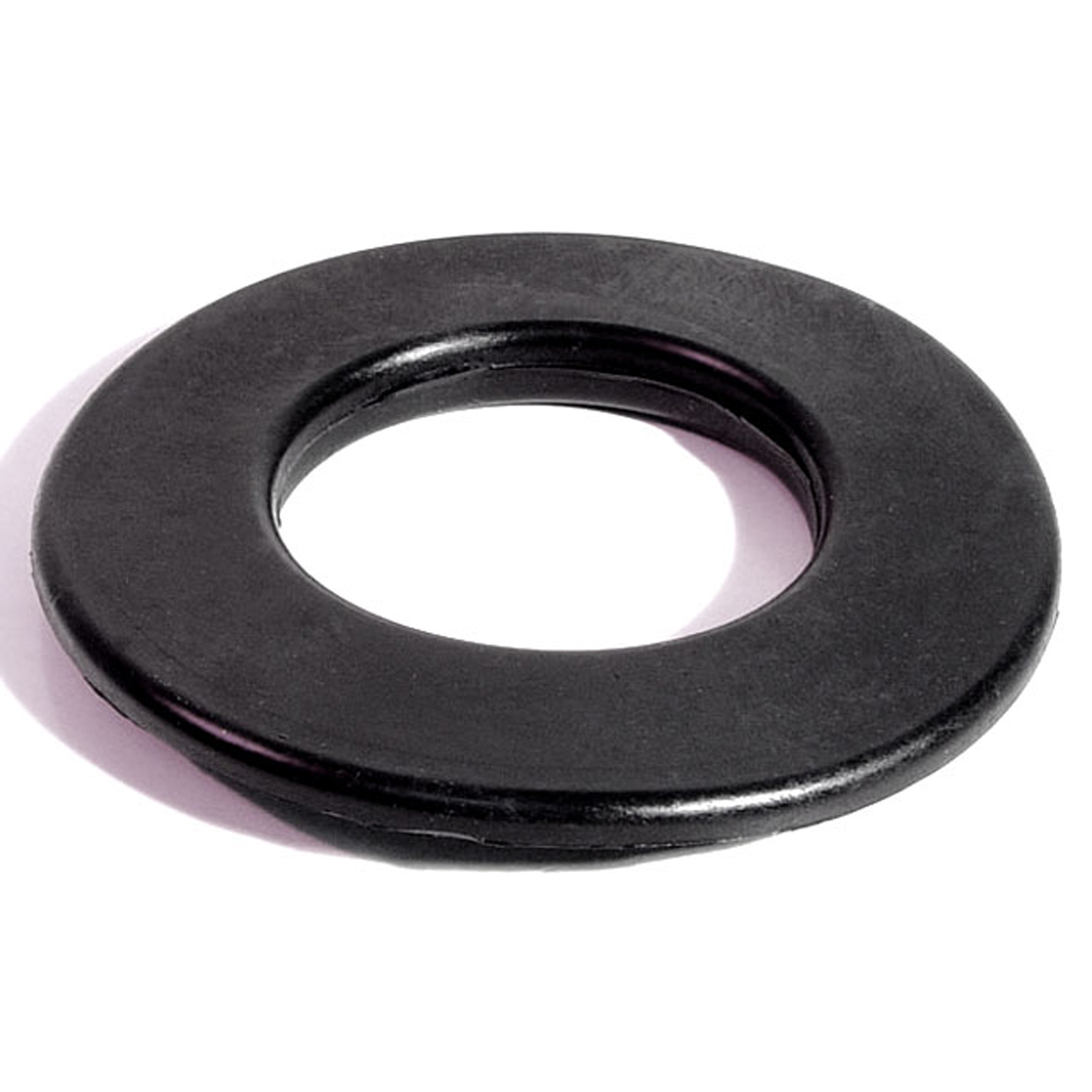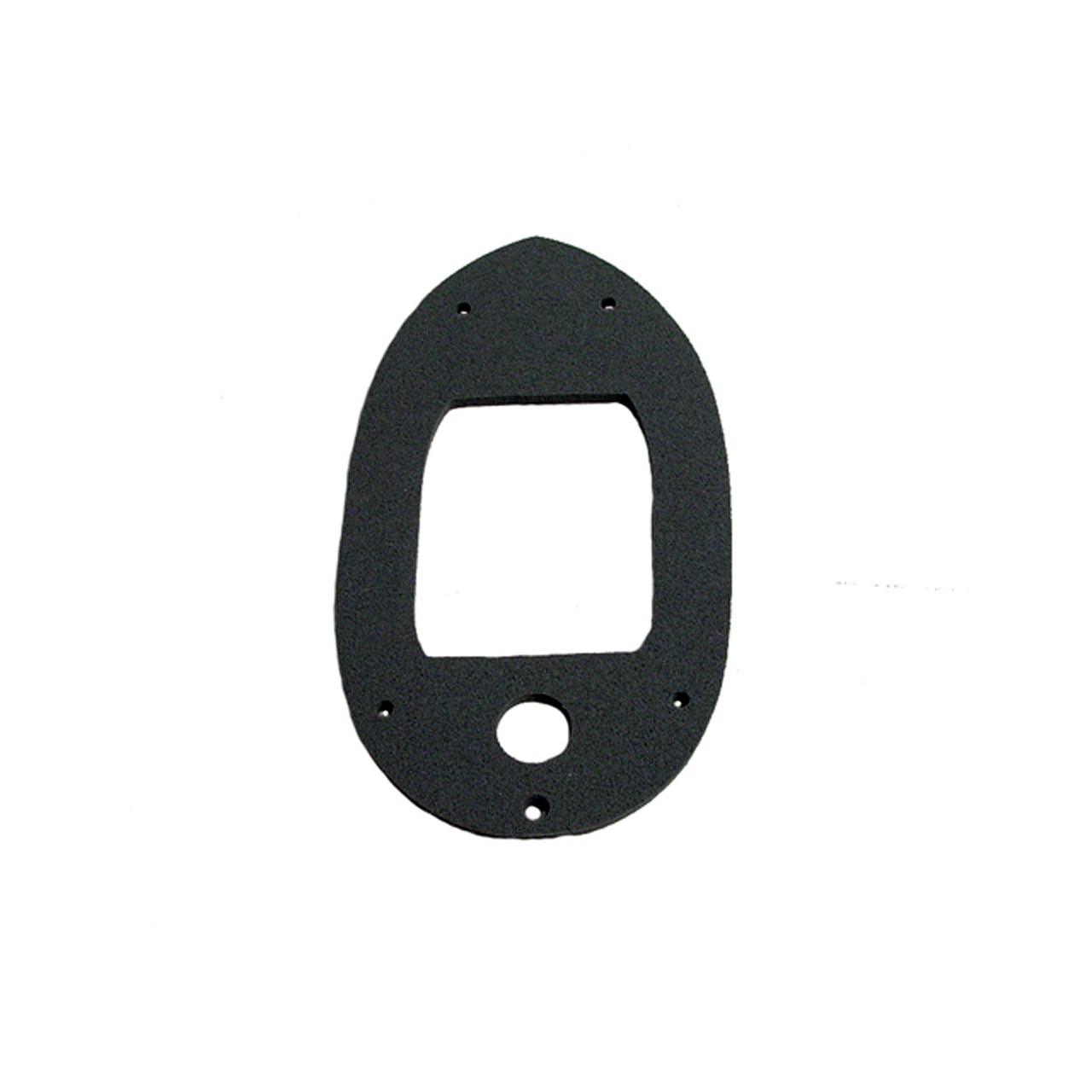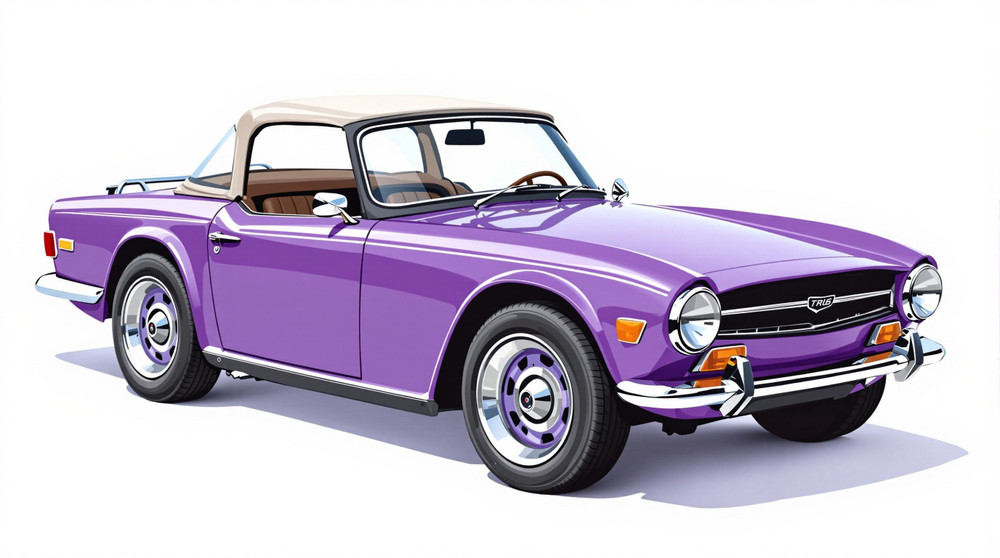Image of 1969 Triumph Tr6, Note: These illustrations use artistic license and may differ from actual historical models.
Performance Metrics
Fundamental Metrics
Emotional Appeal
MMP Rating
| Engine Specifications | |
|---|---|
| Engine: | Inline 6 |
| Displacement: | 2.5L |
| Horsepower: | 104-150 hp |
| Torque: | 143-164 lb-ft |
| Compression Ratio: | 8.5:1 |
| Ignition System: | Electronic |
| Cooling System: | Water-cooled |
| Performance Specifications | |
| 0-60 Time: | 8.2 seconds |
| 1/4 Mile Time: | 16 seconds |
| Top Speed: | 119 mph |
| Transmission and Drive | |
| Drive Type: | RWD (Rear Wheel Drive) |
| Transmission Type: | 4-speed manual, optional overdrive |
| Fuel and Efficiency | |
| Fuel System Type: | Twin SU carburetors |
| MPG: | 22 mpg |
| Dimensions and Brakes | |
| Brakes: | Front disc brakes, rear drum brakes |
| Wheelbase: | 88 inches |
| Weight: | 2,200 lbs |
Note: Specifications for classic cars are given to the best of our ability, considering the limited and variant data available.
The Quintessential British Roadster: 1969 Triumph TR6
The 1969 Triumph TR6 is not merely a car; it's a slice of motoring heritage that embodies the spirit of British sports car design. Born in an era when the open road beckoned for spirited driving and wind-in-the-hair freedom, the TR6 stood out as a robust and stylish roadster. Triumph, a marque synonymous with quintessential British sports cars, introduced the TR6 as a successor to the TR5 (or TR250 in North America), offering a blend of traditional craftsmanship and sporting performance. A particularly intriguing fact about the TR6 is that it was one of the last mainline British sports cars to maintain a separate body and chassis construction, making it a swan song of classic automotive engineering.
Design and Innovation
The exterior of the 1969 Triumph TR6 was distinguished by its sharp lines and muscular stance, courtesy of Karmann's subtle redesign of its predecessor's Michelotti-penned shape. The car's squared-off front and back ends were trendsetters, giving it an aggressive look that has aged gracefully over time. Inside, the cabin was an exercise in straightforward British charm with Smiths gauges set into a walnut veneer dashboard, and seats trimmed in leather or vinyl depending on the market. The materials used were of good quality for the period, ensuring that the interior space felt cozy yet purposeful. Technological features were modest but effective; with independent rear suspension as standard, the TR6 offered handling prowess ahead of many contemporaries. Color options ranged from vibrant reds and blues to more subdued greens and whites, with Signal Red being a particularly popular choice that accentuated the car's sporty lines. The most iconic body style was undoubtedly the convertible, complete with its manually operated top that was as much part of the driving experience as the car itself.
Historical Significance
The Triumph TR6 carved out its niche by offering a compelling combination of performance and affordability. It managed to capture the essence of what many enthusiasts consider to be the golden age of British sports cars. Its impact on automotive design might not have been revolutionary, but its success reinforced the importance of character in a vehicle—something that would influence future designs. What truly set this car apart from its contemporaries was its ability to offer genuine sports car thrills without compromising on reliability or practicality. Its lasting influence can be seen in how it is still celebrated by classic car enthusiasts worldwide for its blend of performance and timeless design.
Performance and Handling
Underneath its hood lay a robust 2.5-liter inline-six engine that delivered around 150 horsepower (in PI form) which propelled the car to respectable top speeds north of 120 mph. Acceleration from 0-60 mph could be achieved in just under 8.5 seconds—a notable figure for its time. The driving experience was pure and engaging; drivers could expect to hear the distinct growl of the inline-six, especially with the top down. The ride was firm yet forgiving enough to handle bumps without jarring occupants excessively. The combination of direct steering and capable suspension meant that winding roads were where the TR6 truly shined.
Ownership Experience
The Triumph TR6 was versatile enough to serve as a daily driver or weekend showpiece, with some even taking it onto the racetrack. Maintenance is relatively straightforward for those familiar with classic British sports cars, though parts availability can vary depending on location. Reliability is typical for vehicles of this vintage; regular care is essential but most issues are well-documented and manageable for those willing to get their hands dirty.
Fun Facts
A few fun facts about this model include its appearance in numerous television shows and movies, adding to its pop culture legacy. While not known for breaking speed records, it did become one of Triumph's best-selling models with over 94,000 units produced during its production run. Common criticisms often revolved around rust issues—a fate not uncommon among British cars of this era—and electrical gremlins courtesy of Lucas Industries components.
Collector's Information
Today, the value range for a well-maintained 1969 Triumph TR6 can vary significantly based on condition, originality, and provenance. Prices can range from $15,000 for driver-quality examples up to $50,000 or more for concours-level specimens. Rarity is moderate as production numbers were healthy; however, survivors in excellent condition are becoming increasingly scarce. The market trend shows appreciation in value for these vehicles as they become recognized not just as classic cars but as investments too.
Conclusion
The 1969 Triumph TR6 stands as an icon among British roadsters—cherished for its driving dynamics, distinctive styling, and role in automotive history. As we look back at this storied machine, we're reminded that some cars offer more than just transportation; they offer an experience—a journey through time encapsulated within their sheet metal souls.
1969 Triumph Tr6 Catalog of Parts
 1969 Triumph TR6 Gas Filler Grommet. 2" I.D., 3-5/8" O.D. Each-GF 60Gas Filler Grommet. 2" I.D., 3-5/8" O.D. Each
1969 Triumph TR6 Gas Filler Grommet. 2" I.D., 3-5/8" O.D. Each-GF 60Gas Filler Grommet. 2" I.D., 3-5/8" O.D. Each 1969 Triumph TR6 Tail-light Lens Gasket. Each-MP 999-CCTail-light Lens Gasket. Each
1969 Triumph TR6 Tail-light Lens Gasket. Each-MP 999-CCTail-light Lens Gasket. EachWhy Choose Metro?
For over 100 years, Metro Moulded Parts has been the pinnacle of quality in classic car restoration parts. Our commitment to precision and authenticity in every component ensures a perfect fit and an OEM-level appearance.
- Expert Craftsmanship & Quality: Each part is a testament to our dedication to reliability and perfection, crafted from original designs and thoroughly tested.
- Advanced Technology: We use cutting-edge techniques to create flawless, long-lasting parts that surpass others in performance.
- SuperSoft Sponge – The Ultimate Door Seal: Not only are our door seals 30% softer than competitors', but they're also guaranteed to never leak. They effectively reduce wind and road noise, enhancing your classic car's comfort and driving experience.
- Proudly American: Our parts are a product of American craftsmanship, made in the USA with a spirit of excellence and heritage.
- Unrivaled Warranty: We back our products with a 30-year industry-leading warranty, a testament to our confidence in their quality.
Join us in preserving the legacy of classic cars with parts that are crafted for perfection, not just made.

